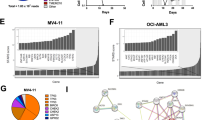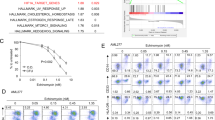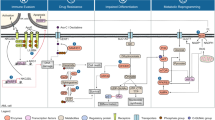Abstract
Cellular resistance to anthracyclines is often associated with an unfavorable clinical outcome in a variety of cancers, including leukemia. Several mechanisms of anthracycline resistance may be involved such as an impaired transport of drugs across the plasma membrane, an increased drug efflux, an increased intracellular detoxification of drugs, a reduced availability of intracellular drug targets, or a reduced ability of cells to induce apoptosis. Here, we review the studies published about mechanisms which may explain resistance to anthracyclines in leukemic cells of pediatric patients.
This is a preview of subscription content, access via your institution
Access options
Subscribe to this journal
Receive 12 print issues and online access
$259.00 per year
only $21.58 per issue
Buy this article
- Purchase on Springer Link
- Instant access to full article PDF
Prices may be subject to local taxes which are calculated during checkout
Similar content being viewed by others
Author information
Authors and Affiliations
Rights and permissions
About this article
Cite this article
Den Boer, M., Pieters, R. & Veerman, A. Mechanisms of cellular anthracycline resistance in childhood acute leukemia. Leukemia 12, 1657–1670 (1998). https://doi.org/10.1038/sj.leu.2401175
Received:
Accepted:
Published:
Issue Date:
DOI: https://doi.org/10.1038/sj.leu.2401175
Keywords
This article is cited by
-
Effect of structural modification at the 4, 3′, and 2′ positions of doxorubicin on topoisomerase II poisoning, apoptosis, and cytotoxicity in human melanoma cells
Archivum Immunologiae et Therapiae Experimentalis (2007)
-
In vitro drug-resistance profile in infant acute lymphoblastic leukemia in relation to age, MLL rearrangements and immunophenotype
Leukemia (2004)
-
Sensitivity of Lewis lung carcinoma to cisplatin undergoes considerable variations during growth and metastasizing
Bulletin of Experimental Biology and Medicine (2004)



